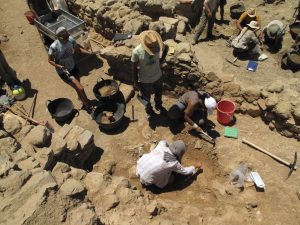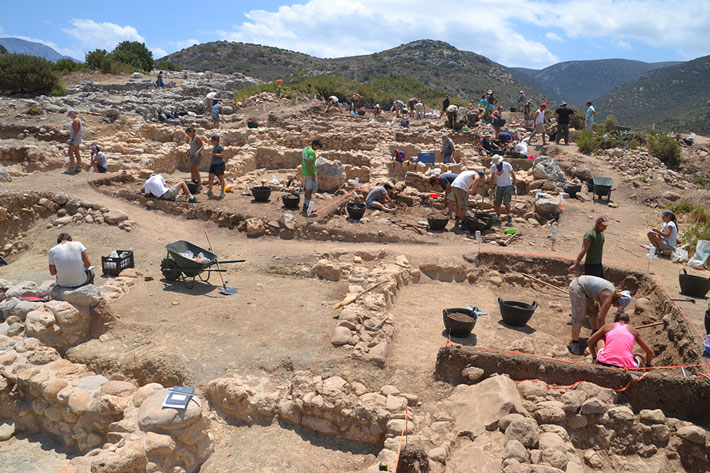
Excavations began in Crete in the second half of the 19th century. In 1878, Minos Kalokairinos, an antiquarian from Iraklion, discovered the Palace of Knossos and did some preliminary excavation work there. In 1884, the Society for the promotion of education under its president, Iosif Hadzidakis, collaborated with Halbherr in excavating the Idaean Cave and the Cave of Eileithyia at Amnissos, and at both these sites wealth of votive offerings were found. In the same year the "LAW CODE" , an important ancient text, was discovered at Gortys.

After Crete achieved independence, archaeologists, both Greek and foreign, were enabled to carry out some highly successful excavations. Arthur Evans and his team unearthed the whole of the Palace at Knossos, the "royal villa", the houses around the palace, the royal cemetery at Zapher Papoura and the "royal tomb" at Isopata , while St. Xanthoudides excavated tombs on the Messara Plain and in other parts of Crete. In the years which followed finds were made all over the island , in cemeteries, settlements and caves.
The most brilliant period of excavation came after the World War II when Greek archaeologists and their colleagues from the foreign archaeological schools (British, Italian, French) brought to light a great wealth of material- representing all forms of Minoan art- from which a coherent picture could be built up of life in the Minoan period.
However, the Cretan earth had still not yielded up all its treasures. In 1960' s prof. N. Platon made some remarkable finds at the Palace of Zakros in eastern Crete, and recently the excavations being carried out by prof. I Sakellerakis in unplundered cemetery at Archanes, new material is still being brought to light.
(from the guide to Iraklion Museum by I Sakellarakis- Ekdotike Athenon)